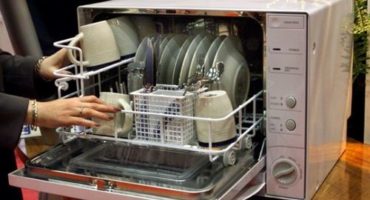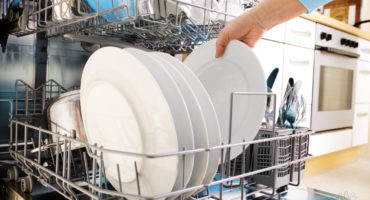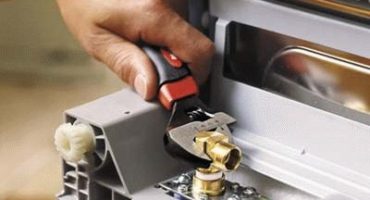The dishwasher is a reliable assistant in any kitchen. Leading manufacturers of equipment such as Ariston, Electrolux, Hansa, Bosch, Beco, Gorenie, Indesit, Mile, Merloni, Zanussi, AEG, Ardo and others equip their models with innovations, are constantly working to improve product quality, and introduce modern technological solutions into new products. But any equipment needs regular maintenance and repair. Even with the most reliable models, various kinds of troubles sometimes occur: water does not accumulate, leakage occurs, or water doesn't leave the dishwasher. However, today we will talk about a fairly common problem - the dishwasher does not pick up water.
If you notice that for some reason there is no water entering the dishwasher, do not rush to call the service center and call the master. May be, clogging problem or minor malfunctions that can be easily fixed by yourself.
So, if you notice that the Bosch dishwasher or any other model does not draw water, first check the water pressure in the plumbing system, is the water supply valve open? It would seem, obviously, but many users fall into a panic, start calling masters without having to double-check such trifles. If the dishwasher buzzes and popsbut doesn’t get water, check the water pressure first. Is the valve in the dishwasher open? Well, let's get started troubleshooting.
Inlet filter clogged
As with washing machines, the inlet filter of the dishwasher can be clogged with various particulate matter. To prevent this from happening later, we recommend putting a filter in the input.
Inlet Filter Cleaning Instructions:
- Turn off the water, unscrew the hose and drain all liquid from it.

- Take the pliers and with precise movements pull out the plastic filter from the valve, thoroughly rinse it under running water.
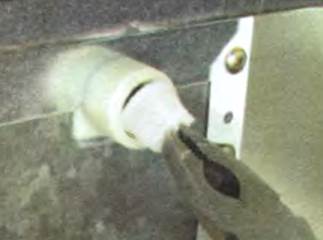
- Insert the filter back and connect the hose.
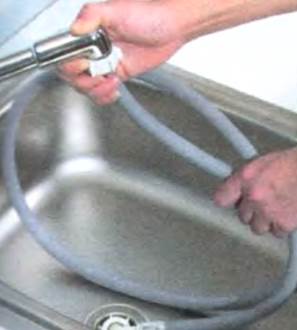
Inlet hose clogged or pinched
The reason that water does not flow may be commonplace dishwasher hose blockage. Just as in the previous case, the problem is easily fixed with your own hands. Pre-prepare a large basin, then unscrew the hose from the in-line filter and drain the water into a previously prepared container. If clogging occurs, completely disconnect the hose and rinse thoroughly under running water. Next, the hose must be put in place. During installation, make sure that there are no excesses, check that the gaskets are correctly installed.
By the way, water may not or may not flow well even if the hose is pinched. Therefore, check this point.
Intake valve failure
The inlet valve is a complex mechanism, the principle of which is similar to the operation of a conventional valve for water supply, however, in contrast to it, all procedures for supplying and stopping the flow of water occur in automatic mode. Most often, the inlet valve is damaged by particles of dirt that were not retained in the filter of the bulk valve and penetrated further. Therefore, once again, try to put the filter on the water inlet and regularly clean the inlet filter.
If trouble has occurred and the spare part has been damaged, do not be discouraged. You can replace this node with your own hands if you have access to it.Do not forget to first unplug the plug and wait 15 minutes to discharge the capacitor.
How to replace the intake valve:
- Disconnect the inlet hose and remove the spare part from the dishwasher body.
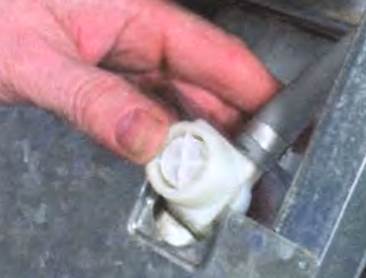
- Remove the clamp from the internal nozzle of the device. Please note that many manufacturers in this technique install single clamps. Therefore, first, along with the inlet valve, do not forget to order and buy a stainless steel clamp with a tightening screw.
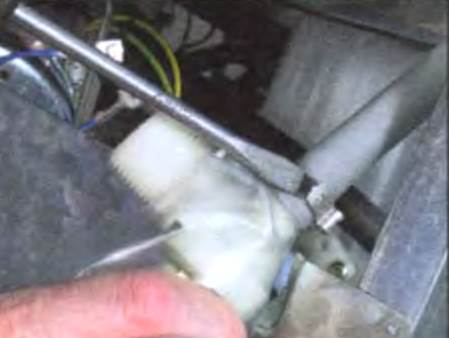
- In the next step, remove the hose, helping yourself with the tip of a screwdriver (do not try to pull on it, as this will complicate the situation even more).

- Before removing electrical contacts, be sure to mark them for convenience. If the tips are difficult to remove, help yourself with a screwdriver. If the connections are soldered, it is better to contact a service center to replace the valve.
- After the spare part has been replaced, install all elements in the reverse order. If the valve has a plastic curtain to protect it from getting water, do not forget to put this part in time.
Control Module Failure
The programmer is the brain of the dishwasher. If it fails, the technique can behave differently. Note that this is one of the most unpleasant problems, the elimination of which is associated with the need to purchase an expensive part. Most often, the control module fails due to power surges. To replace a spare part, it is better to contact a service center.
Pressure switch failure
Sometimes the trouble is due to water level sensor malfunctions. This element gives the control board signals that the water in the dishwasher has reached the set level. If the pressure switch is faulty, the microcontroller does not receive signals, respectively, water does not flow.
Instructions for replacing the water level sensor:
- Unplug the plug and remove the sensor from the dishwasher. Penetrating into the internal structure of the product, remember about safety. In the design of some models of dishwashers there is a capacitor. It stores a charge for a long time, even if the equipment has been disconnected from the network. Therefore, before opening the cover of the device, unplug the product from the wall outlet and wait at least 15 minutes to discharge the Conder, and there are no risks of electric shock.
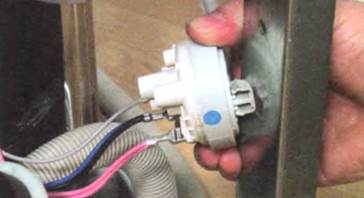
- For convenience, outline the electrical connections of the pressure switch and remove the tips from the sensor terminal wires with pliers.
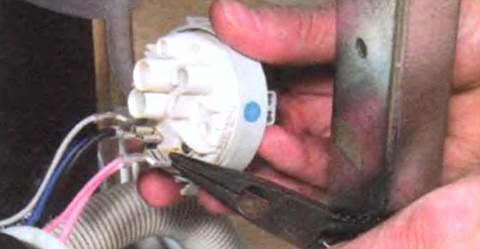
- Remove the plastic tube from the nozzle and carefully blow into the tube. This is necessary to verify the operation of the node. If the sensor is OK, you will hear a typical click. To avoid damage to the internal mechanism of the sensor, do not blow too much into the tube.

- If during the inspection it was found that the sensor is broken, purchase a similar spare part and install it. Replace the handset and connections. Check that everything is set as it was before.
Dishwasher collects and drains water continuously
Well, we examined the main reasons why the dishwasher refuses to work and draw water. However, in some cases, a diametrically opposite situation can be observed, when, it would seem, the equipment collects water, but immediately drains it. It is logical to assume that if the machine immediately drains the water, the problem is different. But, alas, this is not easier for the user, since in any case you can’t wash dirty dishes and pans.
In many cases, the main reason that the equipment constantly drains water is the protection against water leaks. This system is called Aquastop. Most often shown error e15. At the same time, the drain pump is constantly working. Why it happens? The fact is that when water enters the equipment pan, the pump tries to pump this water out. Fixing a leak of this kind is easy. To do this, it is enough to remove water from the sump, as well as from the Aquastop sensor.Depending on the features of a particular model, this sensor may be located in different places, so we recommend that you read the instruction manual and instructions. To let water flow out of the sensor, tilt the machine at an angle of about forty-five degrees. After that, try to start the device. The tilt of the equipment will help even if the sensor of the anti-leakage protection system sticks to the “water” position.
The next, no less common reason is the failure of the bulk valve. This malfunction has already been discussed in this material. So, - you ask, - the dishwasher will not collect water at all, or will it collect, and then immediately drain? With this malfunction, the technique can behave differently. It all depends on in which position the valve is jammed. If in closed, - water will not enter the machine at all, if in open - it will flow continuously. After all, after the pressure switch informs the microcontroller that the water has been drawn, and he, in turn, tells the valve to close, the valve will not follow the order - the pump will turn on, which, in order to avoid overflow, will begin to remove water.
As you can see, there are many reasons why a dishwasher does not draw water or draws it, and then immediately drains it: from the most harmless blockages to such serious troubles as a breakdown of the control module. At the same time, we do not recommend fixing the malfunctions on your own, with the exception of blockages of the intake valve and nozzles, with your own hands, if you do not even have basic knowledge. Trouble can result in more complex faults. In addition, not all breakdowns are obvious. In some cases, it will not be out of place to figure out why a particular malfunction occurred, what factors provoked it.
In order for your dishwasher to serve you as long as possible, do not neglect the manufacturer's recommendations regarding loading the dishwasher, operating conditions, use water filters, special salt, it will not be superfluous to install a stabilizer. In addition, do not forget to clean the coarse and fine filters after each washing cycle, do not load crystal, porcelain, or soft plastic dishes into the equipment. Rinse the filters under running water.

